2020 has led to a multitude of discoveries and amazing science in all of astronomy (planetary, stellar, and extragalactic alike!) Here are some of the highlights from our ‘lookback’ in astronomy from the previous year!
(CNN)This year has been a tough one no matter where you live in the world, but discoveries beyond our planet and dazzling images of the cosmos provided a bright spot in 2020. Astronauts continued to safely travel to space, despite the pandemic, and even embarked on historic launches. And they taught us how to handle isolation.We learned more about our little corner of the universe as well as the vast reaches beyond it studded with strange stars — and even stranger exoplanets.
Hubble’s 30th anniversary
The Hubble Space Telescope launched 30 years ago in April, forever changing the way we see the universe. The telescope’s ethereal, dreamy and almost fantasy-like views of space vistas have inspired people for decades and led to some of the most important astronomical discoveries.
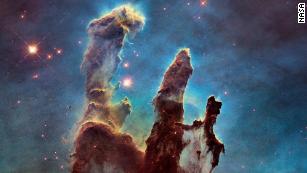
Hubble Space Telescope celebrates 30 years of discoveries and awe-inspiring images Hubble has enabled astronomers around the world to study black holes, mysterious dark energy, distant galaxies and galactic mergers. This vital research instrument has observed planets outside of our solar system and where they form around stars, and star formation and death;and it has looked across 97% of the universe, effectively peering back in time. Hubble captured this image of a giant red nebula and smaller blue neighbor nebula to celebrate its 30th anniversary in April.Hubble teams in 2020 have continued to release new images and contributed to a wealth of discoveries. Hubble’s scientists believe that the telescope will keep operating through at least 2025, if not longer.
Hubble captured this image of a giant red nebula and smaller blue neighbor nebula to celebrate its 30th anniversary in April.Hubble teams in 2020 have continued to release new images and contributed to a wealth of discoveries. Hubble’s scientists believe that the telescope will keep operating through at least 2025, if not longer.
Humans in space
This year marked 20 years of a continuous human presence on the International Space Station.
Some of the experiments launched on the space station this year included genetically enhanced “mighty mice” and Nickelodeon’s slime. What’s more, astronauts even tested baking cookies and growing their own salad ingredients in space.

Astronauts harvest radishes grown aboard the International Space Station Astronauts also learned more about how their bodies adapt to space. A suite of studies revealed some of the genetic changes astronauts experience during long-term spaceflight, a crew had to handle a blood clot in space, and NASA astronaut Christina Koch set a new spaceflight record for women.Commercial cargo vehicles and crew transport provided by SpaceX are allowing more experiments and astronauts to travel to and from the space station — which means that even more scientific discovery is possible on the space station in the future. And the current crew recently received a VR camera and a new toilet based on astronaut feedback.
A long-lost comet
Comet NEOWISE brought delight as it streaked across our skies. It’s named after NASA’s Near-Earth Object Wide-field Infrared Survey Explorer, otherwise known as the NEOWISE mission, which discovered it in late March.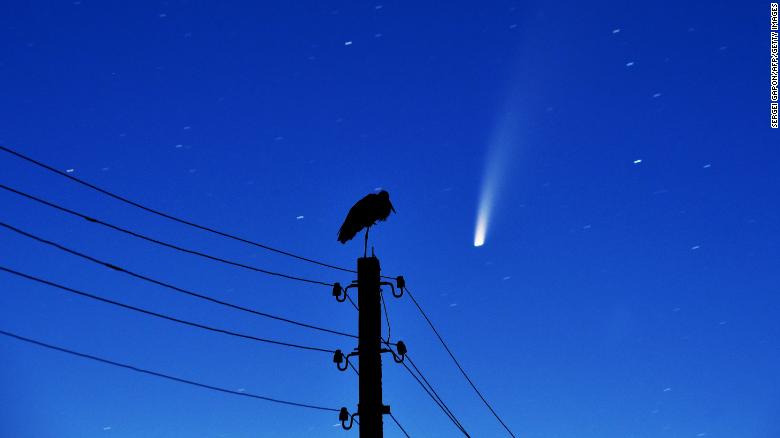 A stork stands on a power lines pillar as the comet NEOWISE is seen in the sky above the village of Kreva, some 100 km northwest of Minsk, early on July 13, 2020. By observing the comet, the researchers have learned that it’s about 3 miles in diameter, the average size for a comet with a long orbit. And it’s incredibly bright, even if it’s not as spectacular as Comet Hale-Bopp as witnessed in 1997. After disappearing from view, the comet continued on its very long orbit to the edge of the solar system. This is why we won’t see the comet again in our lifetimes — it takes thousands of years to travel the outer solar system before returning to the inner solar system. But, scientists point out, this means the comet isn’t exactly new, only new to us, because it previously passed through Earth’s skies when humans were present about 6,800 years ago.
A stork stands on a power lines pillar as the comet NEOWISE is seen in the sky above the village of Kreva, some 100 km northwest of Minsk, early on July 13, 2020. By observing the comet, the researchers have learned that it’s about 3 miles in diameter, the average size for a comet with a long orbit. And it’s incredibly bright, even if it’s not as spectacular as Comet Hale-Bopp as witnessed in 1997. After disappearing from view, the comet continued on its very long orbit to the edge of the solar system. This is why we won’t see the comet again in our lifetimes — it takes thousands of years to travel the outer solar system before returning to the inner solar system. But, scientists point out, this means the comet isn’t exactly new, only new to us, because it previously passed through Earth’s skies when humans were present about 6,800 years ago.
Our peculiar neighbors
The moon, Venus, Mars and Jupiter all made news with new discoveries on each planet that are intriguing researchers. New research revealed there may be more water on the moon than previously believed, including on its sunlit surface. This water could be used as a resource during upcoming missions — like NASA’s return of humans to the lunar surface through the Artemis program.The first results returned by NASA’s InSight lander revealed that Mars is seismically active and experiences Marsquakes on a regular basis.
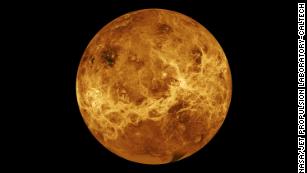
Our crazy finding suggesting life on VenusVenus may have the ability to harbor life in its clouds. A gas on Earth was also detected in the atmosphere of Venus. The discovery of phosphine could hint at unknown processes occurring on Earth’s “twin.” Phosphine suggests the presence of life on Earth. And the idea of aerial life in the clouds of Venus is intriguing. While it’s not likely, researchers want to probe this idea more in the future.![]() The lightning phenomenon known as a sprite depicted at Jupiter in this illustration. The Juno mission at Jupiter investigated water on the largest planet in our solar system, as well as observing blue sprites and elves twirling in the upper atmosphere of Jupiter. While it may sound like something out of a fantasy novel, sprites and elves are actually two types of quick, bright flashes of light, or transient luminous events. Juno and Hubble also spied monstrous storms and the planet’s jack-o’-lantern glow.
The lightning phenomenon known as a sprite depicted at Jupiter in this illustration. The Juno mission at Jupiter investigated water on the largest planet in our solar system, as well as observing blue sprites and elves twirling in the upper atmosphere of Jupiter. While it may sound like something out of a fantasy novel, sprites and elves are actually two types of quick, bright flashes of light, or transient luminous events. Juno and Hubble also spied monstrous storms and the planet’s jack-o’-lantern glow.
Asteroid samples postmarked for Earth
In October, NASA’s OSIRIS-REx mission briefly landed on the near-Earth asteroid Bennu and successfully collected a hefty sample from the asteroid’s surface that will be returned to Earth by 2023. It was the agency’s first mission to land on an asteroid and collect a sample, and the spacecraft sent back some great images of the historic moment.
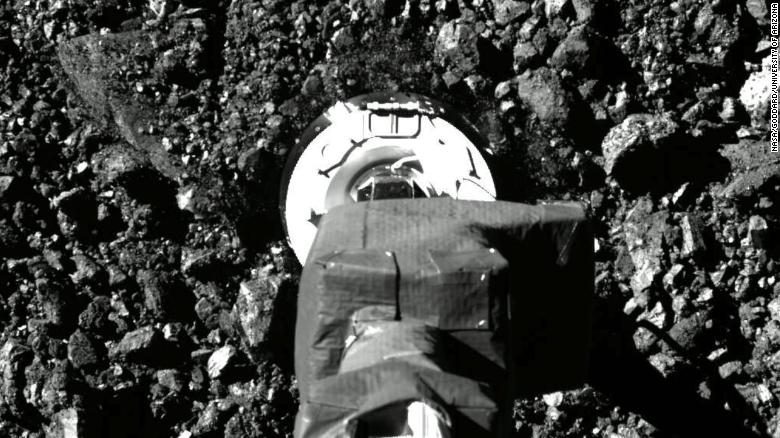 Spacecraft cameras captured the moment OSIRIS-REx touched down on Bennu.Meanwhile, the Japan Aerospace Exploration Agency’s Hayabusa2 mission dropped off its sample collection capsule, containing samples from the near-Earth asteroid Ryugu, in December before moving on to visit more asteroids. The sample is some of the first subsurface material ever collected from an asteroid. The samples from both asteroids could tell us more about how the solar system formed and how elements like water were delivered to Earth early in its history.
Spacecraft cameras captured the moment OSIRIS-REx touched down on Bennu.Meanwhile, the Japan Aerospace Exploration Agency’s Hayabusa2 mission dropped off its sample collection capsule, containing samples from the near-Earth asteroid Ryugu, in December before moving on to visit more asteroids. The sample is some of the first subsurface material ever collected from an asteroid. The samples from both asteroids could tell us more about how the solar system formed and how elements like water were delivered to Earth early in its history.
Betelgeuse, Betelgeuse, Betelgeuse
This year was all about Betelgeuse, a red giant star in the Orion constellation thought to be on the brink of a supernova explosion.The star began dimming in 2019 and continued in 2020, leading astronomers to think it may explode. 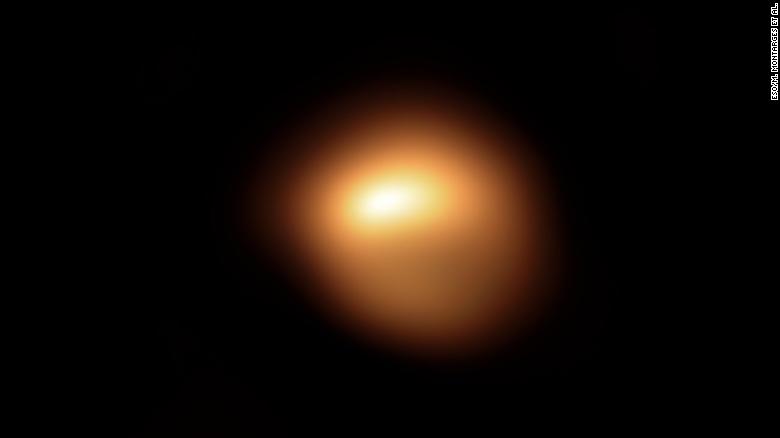 This image shows the red supergiant star Betelgeuse as it was dimming in December 2019.But Hubble helped astronomers determine that the star ejected some of its material, which blocked light from the star. The star is typically one of the brightest in our sky. However, not all researchers agree on this scenario and continue to observe Betelgeuse.
This image shows the red supergiant star Betelgeuse as it was dimming in December 2019.But Hubble helped astronomers determine that the star ejected some of its material, which blocked light from the star. The star is typically one of the brightest in our sky. However, not all researchers agree on this scenario and continue to observe Betelgeuse.
Black holes in the spotlight
It’s kind of fitting that 2020 may go down in space discovery history as the year of the black hole — considering all of our plans for this year seemed to disappear down a black hole of their own. The 2020 Nobel Prize in Physics was awarded for black hole discoveries that revealed the “darkest secrets of the universe.”A record-breaking explosion created by a black hole 390 million light-years away was discovered by astronomers. Researchers compared the biggest explosion detected in the universe to the 1980 Mt. St. Helens eruption — except “you could fit fifteen Milky Way galaxies in a row into the crater this eruption punched” through a gaseous cluster in space, they said.  This illustration depicts a star experiencing spaghettification as it’s sucked in by a supermassive black hole.Astronomers discovered the long-sought intermediate-mass black hole, the size of which is between that of supermassive black holes and smaller black holes. This finding will help scientists understand how black holes evolve. The research team was able to confirm the observation of an intermediate-mass black hole, known as an IMBH, inside a dense cluster of stars.Gravitational waves were also detected from the merging of two black holes that included an intermediate-mass black hole.Researchers also found the closest black hole to Earth 1,000 light-years away, observed the beating heart of a supermassive black hole and detected light from two colliding black holes for the first time. And astronomers witnessed the “spaghettificaton” of a star as it was shredded and devoured by a supermassive black hole.
This illustration depicts a star experiencing spaghettification as it’s sucked in by a supermassive black hole.Astronomers discovered the long-sought intermediate-mass black hole, the size of which is between that of supermassive black holes and smaller black holes. This finding will help scientists understand how black holes evolve. The research team was able to confirm the observation of an intermediate-mass black hole, known as an IMBH, inside a dense cluster of stars.Gravitational waves were also detected from the merging of two black holes that included an intermediate-mass black hole.Researchers also found the closest black hole to Earth 1,000 light-years away, observed the beating heart of a supermassive black hole and detected light from two colliding black holes for the first time. And astronomers witnessed the “spaghettificaton” of a star as it was shredded and devoured by a supermassive black hole.
Weird exoplanets and rogue planets
Astronomers found baby exoplanets forming around stars, doomed exoplanets, whimsically named cotton candy exoplanets, Star Wars-esque planets, planets made of diamonds and the hottest exoplanet.Researchers also found an exoplanet orbiting a white dwarf, or dead star, for the first time, as well as an exposed planetary core orbiting a distant star. For the first time, they captured an image of two giant exoplanets orbiting a young sun-like star.
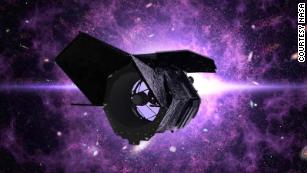
NASA names Nancy Grace Roman Space Telescope in honor of agency’s first chief astronomerBut much of the excitement on the horizon is around rogue planets, or planets traveling through space that don’t orbit stars. Astronomers detected the smallest rogue planet in our Milky Way galaxy, and it’s between the sizes of Mars and Earth, earlier this year. Given the fact that rogue planets don’t emit light like stars, or even enough heat to be visible in infrared light, these otherwise invisible worlds are hard to spot. But NASA’s Nancy Grace Roman Space Telescope, expected to launch in the mid-2020s, could reveal a multitude of rogue planets in our Milky Way galaxy.
Fast radio bursts from space
Mysterious radio signals from space have been known to repeat, but for the first time this year, researchers noticed a pattern in two separate series of bursts coming from distant sources in the universe. Fast radio bursts, or FRBs, are millisecond-long bursts of radio waves in space. The fast radio bursts known to have a repeating pattern that occurs every 16 days, while the other occurs every 157 days.
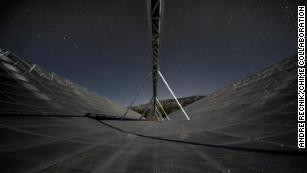
Fast radio burst may have come from the Milky Way Astronomers have yet to determine what causes these fast radio bursts, which are unpredictable but can be spotted and traced back to their origin using sensitive telescopes. The bursts are being used to find “missing matter” in the universe.And last month in a first, astrophysicists detected a fast radio burst that likely traveled to Earth from a particular type of neutron star in our Milky Way galaxy, accompanied by X-ray emissions.
A new look at our sun
After making its first close pass of the sun this year, the Solar Orbiter mission captured the closest images ever taken of the sun. In the images, there are small solar flares called “campfires” that can be seen near the sun’s surface. The scientists don’t yet know what exactly the campfires are, but they believe they could be “nanoflares,” or tiny sparks that help heat the sun’s outer atmosphere.

Solar Orbiter mission shares closest images of the sun, reveals ‘campfires’ near its surfaceThe first images returned by the National Science Foundation’s Daniel K. Inouye Solar Telescope revealed that the surface of our sun is a wild, violent place. Details in the images show plasma, which covers the sun, that appears to boil.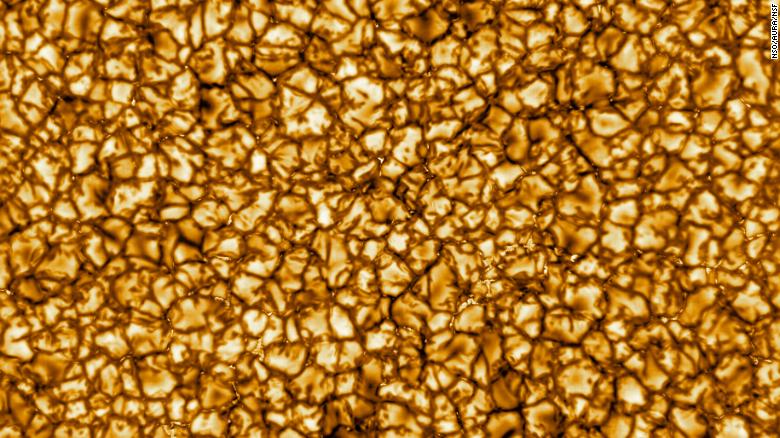 The Daniel K. Inouye Solar Telescope has produced the highest resolution image of the sun’s surface ever taken. Every 11 years, the sun completes a solar cycle of calm and stormy activity and begins a new one. The sun just wrapped its first year of a new cycle.The new solar cycle, Solar Cycle 25, officially began in December 2019. Solar Cycle 25 will be very similar to the one we just experienced for the last 11 years. The next solar maximum, when the sun is experiencing peak activity, is predicted to occur in July 2025. During that time, it’s possible for solar flares or other eruptions for the sun to disrupt communications on Earth.
The Daniel K. Inouye Solar Telescope has produced the highest resolution image of the sun’s surface ever taken. Every 11 years, the sun completes a solar cycle of calm and stormy activity and begins a new one. The sun just wrapped its first year of a new cycle.The new solar cycle, Solar Cycle 25, officially began in December 2019. Solar Cycle 25 will be very similar to the one we just experienced for the last 11 years. The next solar maximum, when the sun is experiencing peak activity, is predicted to occur in July 2025. During that time, it’s possible for solar flares or other eruptions for the sun to disrupt communications on Earth.
A glance at space in 2021
If 2020 was the year of multiple missions launching to Mars — China’s Tianwen-1, the United Arab Emirates’ Hope Probe and NASA’s Perseverance rover — then 2021 will likely be the year of new discoveries on Mars.
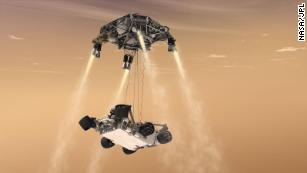
The Perseverance rover is on its way to Mars. What’s next? The year 2021 could also see the first observations from NASA’s James Webb Space Telescope after its October launch and “first light” from the Vera C. Rubin Observatory in Chile. First light is the first astronomical image captured by a telescope after it is completed.And NASA’s Artemis program is expected to ramp up. The science goals for the mission and the first team of 18 Artemis astronauts were announced in 2020. The Artemis program seeks to land the first woman and the next man on the moon in 2024, so updates about the goals, training and preparation for Artemis are expected throughout 2021.
Story reprinted from here: (Author Credit): Ashley Strickland, CNN
Follow Iplex
